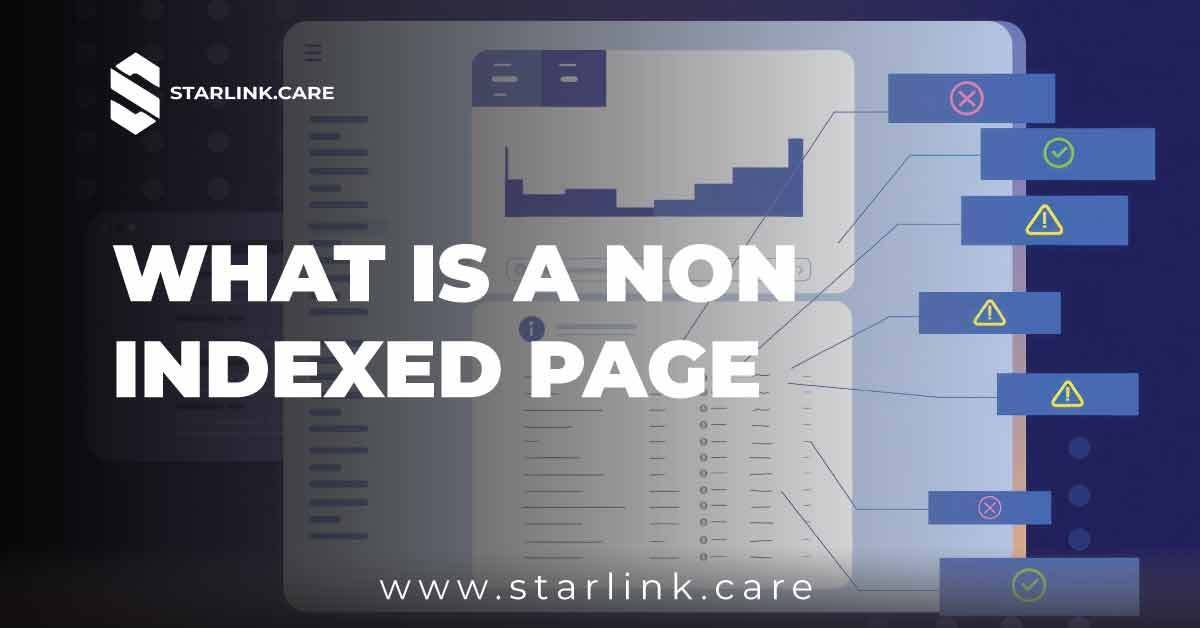What is a Non Indexed Page? Understanding Its Importance in SEO
When you navigate the vast landscape of the internet, you encounter countless websites, articles, and resources. But have you ever wondered why some pages appear in search results while others remain invisible? One key factor is whether a page is indexed or non-indexed. In this article, we will explore What is a Non Indexed Page? and, why it matters, and how it affects your website’s performance.
What Does Indexed and Non-Indexed Mean?
Before we delve deeper into non-indexed pages, let’s define some terms.
- Indexed Page: An indexed page is a web page that has been discovered, analyzed, and stored by search engines like Google. When a page is indexed, it becomes part of the search engine’s database, making it eligible to appear in search results.
- Non-Indexed Page: Conversely, a non-indexed page is one that search engines have chosen not to include in their index. This means it won’t show up in search results, which can have significant implications for your website’s visibility.
Why Are Pages Non-Indexed?
There are several reasons why a page might be non-indexed:
- Noindex Tag: Webmasters can use a special tag called a noindex tag in the HTML of a page. This tag tells search engines not to include the page in their index. It’s a common practice for pages that are not meant for public consumption, such as admin pages or duplicate content.
- Robots.txt File: The robots.txt file is a standard used by websites to communicate with search engine crawlers. If this file disallows specific pages, those pages will not be indexed.
- Poor Quality Content: Search engines prioritize high-quality, relevant content. If a page contains thin or low-quality content, search engines may choose not to index it.
- New or Unlinked Pages: Newly created pages that haven’t been linked from other parts of the website or the internet may not get indexed right away.
- Technical Issues: Sometimes, technical problems such as server errors or broken links can prevent a page from being indexed.
The Importance of What is a Non Indexed Page
While non-indexed pages might seem like a negative aspect of a website, they can serve essential purposes:
1. Privacy and Security
Non-indexed pages can help maintain privacy. For instance, if you have user accounts or personal information on your site, you probably don’t want that information to be publicly accessible. By marking these pages as non-indexed, you can protect sensitive data from being exposed in search results.
2. Improving SEO Strategy
Not all content needs to be indexed. For example, if you have duplicate content across multiple pages, having some of those pages as non-indexed can help avoid penalties from search engines for having too much similar content. This can enhance your overall SEO strategy.
3. Maintaining a Clean Website Structure
Sometimes, you may have pages that are not relevant to your primary audience, such as outdated information or internal notes. Keeping these pages non-indexed can help maintain a clean website structure and ensure that only the most relevant content is searchable.
4. Avoiding User Confusion
Imagine a user searching for a specific product and encountering an outdated or irrelevant page in the search results. This can lead to confusion and a poor user experience. By keeping certain pages non-indexed, you can help ensure that users find the most relevant and useful content.
How to Identify Non-Indexed Pages
Identifying non-indexed pages on your website is crucial for optimizing your SEO strategy. Here’s how you can do it:
Step 1: Use Google Search Console
Google Search Console is an invaluable tool for website owners. By navigating to the “Coverage” report, you can see which pages are indexed and which are not.
Step 2: Check the Robots.txt File
Review your robots.txt file to determine if any pages are blocked from indexing. This file is usually located at yourwebsite.com/robots.txt. If you see lines that state, it means that the page won’t be indexed.
Step 3: Inspect Individual Pages
To check if a specific page is indexed, you can use the search query site:yourwebsite.com/page-url on Google. If the page doesn’t appear in the search results, it’s likely non-indexed.
Step 4: Review Noindex Tags
Inspect the HTML source code of your web pages for the presence of a noindex tag. You can do this by right-clicking on the page and selecting “View Page Source” or “Inspect.” Look for a line that says <meta name="robots" content="noindex">.
How to Make a Page Indexed
If you have non-indexed pages that you want to be discoverable, here are some steps to ensure they get indexed:
Step 1: Remove Noindex Tags
If a page has a noindex tag and you want it indexed, remove that tag from the HTML source.
Step 2: Update Your Robots.txt File
Ensure your robots.txt file does not block the page you want to be indexed.
Step 3: Improve Content Quality
Make sure the content on the page is high-quality, relevant, and provides value to your audience. Engaging content is more likely to be indexed.
Step 4: Create Internal Links
Link to the non-indexed page from other parts of your website. Internal links help search engines discover and crawl your pages more effectively.
Step 5: Submit a Sitemap
Submitting a sitemap to Google Search Console can help search engines find your pages quickly. Make sure your sitemap is updated with the pages you want indexed.
Conclusion
What is a Non Indexed Page? Understanding the difference between indexed and non-indexed pages is essential for anyone involved in managing a website. While non-indexed pages can serve specific purposes, ensuring that the right pages are indexed is vital for improving your site’s visibility and attracting more visitors.
What is a Non Indexed Page? By following the steps outlined in this article, you can effectively manage your website’s pages and enhance your overall SEO strategy. Whether you’re a business owner, blogger, or digital marketer, leveraging the knowledge of indexed versus non-indexed pages can lead to a more successful online presence.







